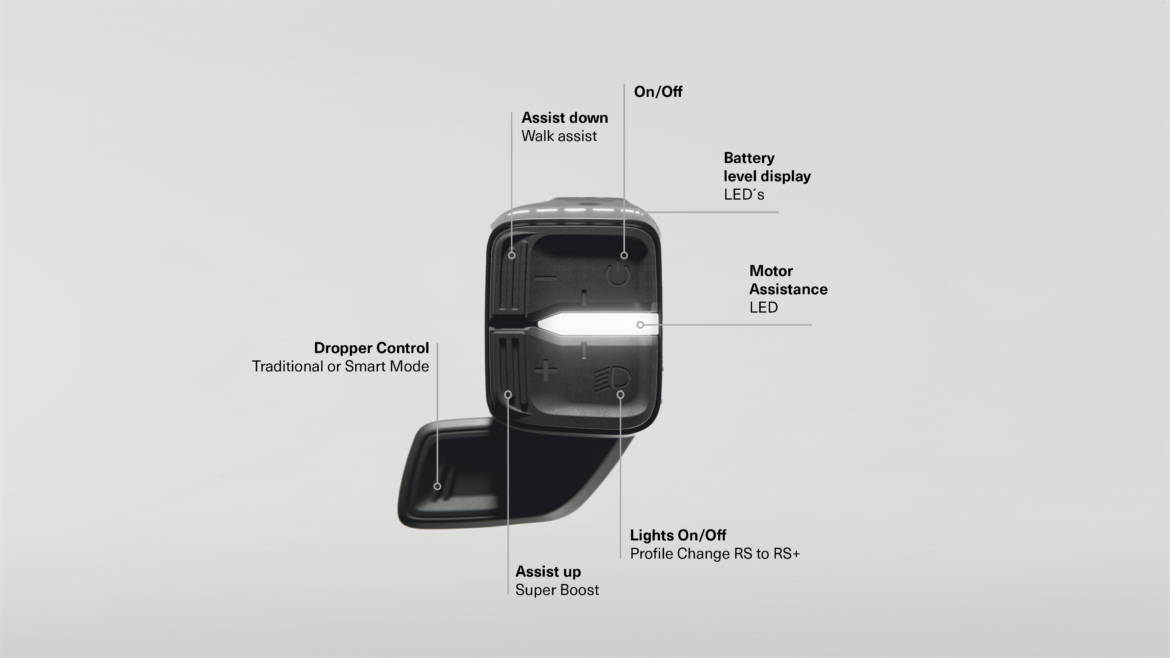
Last month, Orbea showed off its new RS Control system for electric bikes, which integrates multiple electronic components into a unified package. While this particular system is only available on new Orbea Rise eMTBs, it hints at a future where mountain bike controls will look and behave very differently, not only for e-bikes, but non-electric bikes too.
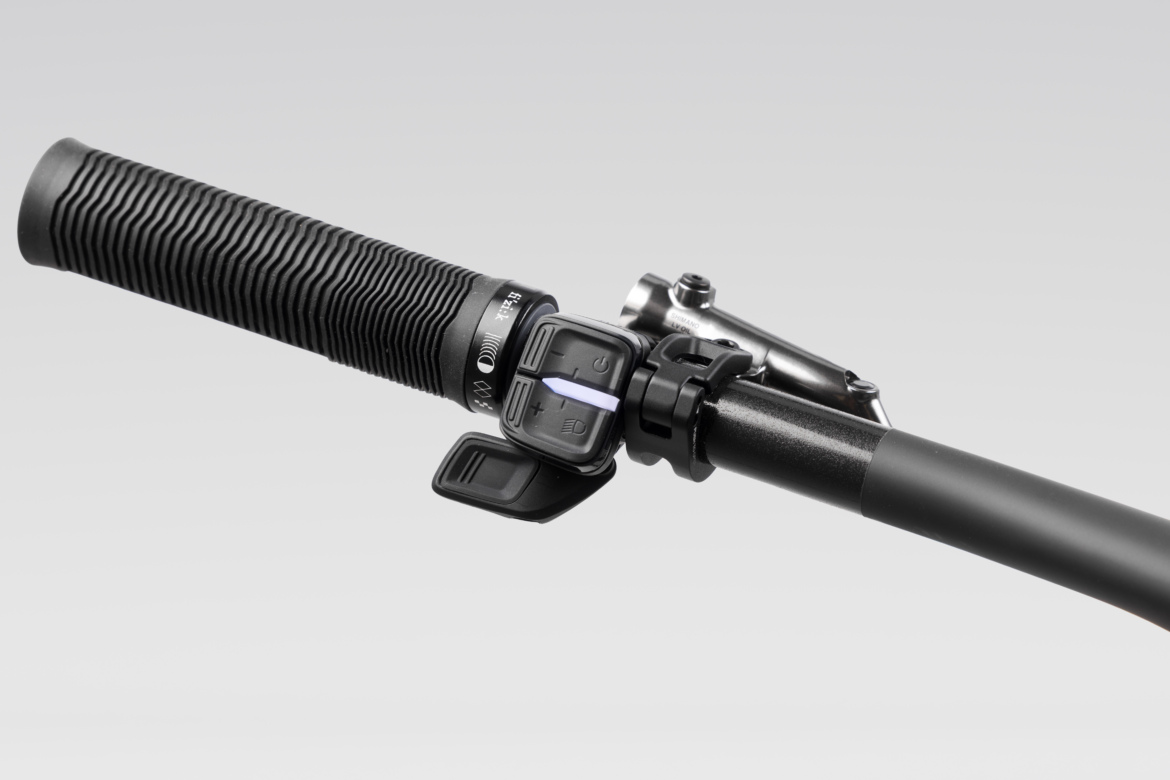
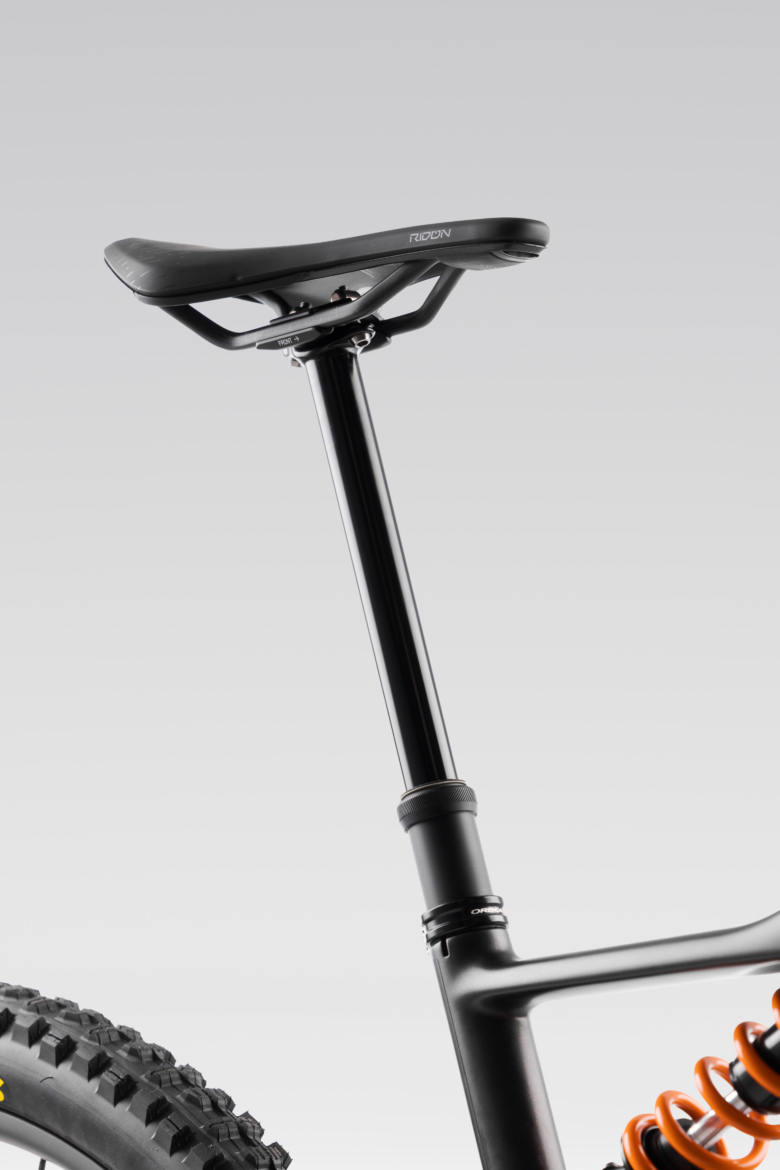
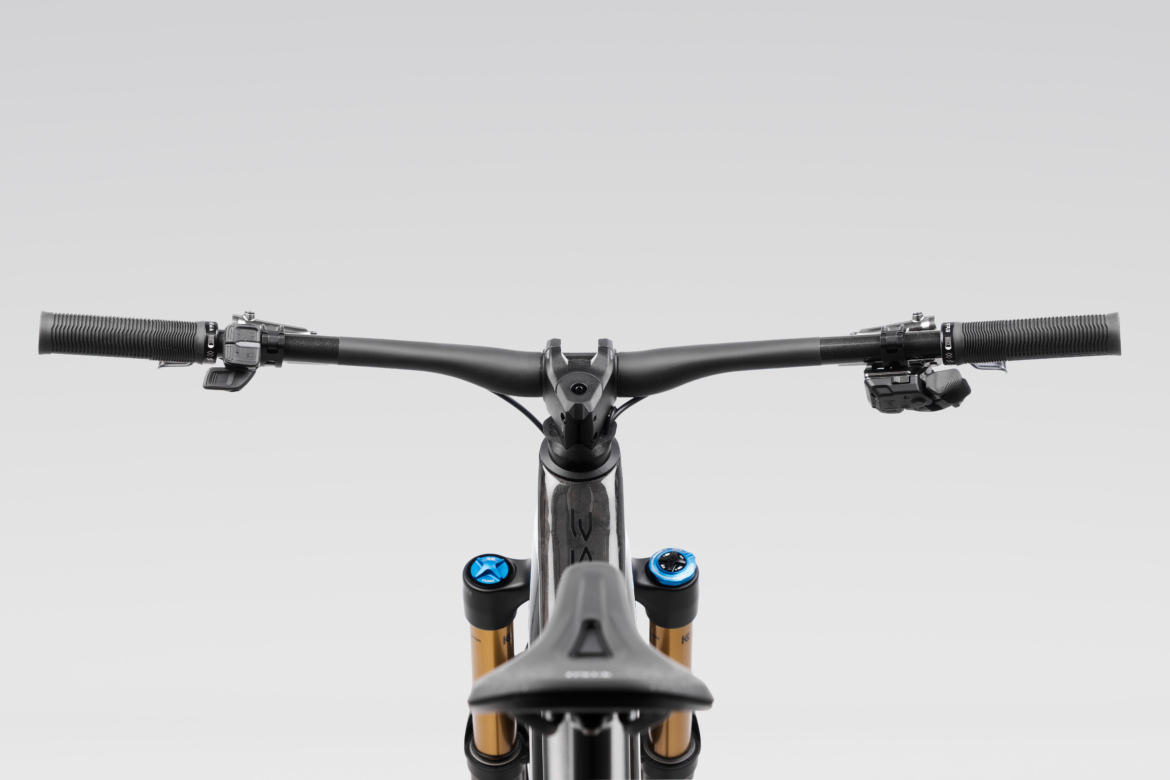
The RS Control System
According to a press release, Orbea developed its own wired system that integrates e-bike motor controls, dropper post controls, and a display into a single bar-mounted remote known as RS
HMI. The remote can be used to adjust the assistance mode on an integrated Shimano EP8 motor, while an LED indicator is used to communicate both the battery level and the assistance mode.
Though the information delivered via the LED is limited compared to what can be displayed on a standard Shimano e-bike screen, the free Orbea RS smartphone app allows riders to change settings and receive firmware updates. There’s also something called the “RS Toolbox” that shares the bike’s cadence, torque, battery status, and ride time data with Garmin watches and bike computers. The upshot is that without a separate screen, you won’t be as distracted during the ride.
Orbea built its own dropper post for the system, the MC10 RS Smart Dropper Post. The wired, electronic post boasts adjustable travel and a feature that allows the rider to temporarily set an intermediate stop position within the post’s travel.
The dropper post and remote are connected to the e-bike’s main battery, so riders don’t have to charge either piece separately. On bikes equipped with an electronic Shimano derailleur, the derailleur is also plugged into the bike’s main battery.
The future of cockpit controls
Over the past few years, brands have been working to accommodate riders looking for a cleaner cockpit setup. Initial solutions involved routing cables and hoses through a bike’s head tube or even the handlebars. However, as wireless drivetrains and dropper posts have become more common, there’s an opportunity to clear the clutter without inducing assembly and maintenance headaches.
And yet, major brands like Shimano and SRAM have not moved beyond traditional shifter and dropper post remotes. Looking at the Orbea RS HMI remote, there are multiple buttons to control the motor and dropper post in a single, bar-mounted unit.
With that in mind, surely we can expect to see the integration of shifter and dropper post controls in a single future remote for non-electric bikes. This would eliminate the left-side dropper post remote and free up valuable bar space while reducing clutter.
Shimano’s new XTR cockpit features two shift paddles plus a third button that can be programmed to perform various functions, like scrolling through screens on a Garmin GPS device. Could a firmware update add the ability to control a Fox Transfer Neo dropper post? One can only hope. A third button is nice, but four or five buttons would be even better to future-proof our controls.
Visual feedback
Though it’s been many years since I’ve ridden a bike with a gear indicator at the shifter, new electronic systems offer the opportunity to bring this feature back. Imagine a row of 12 tiny LEDs on the remote indicating which gear you’re currently using. Or perhaps a single LED — similar to the RS HMI — that could color shift along a spectrum to let you know where you are in your gear range. This would allow riders to keep their focus on the trail ahead rather than glancing down to see if they have one more gear left.
Simplified charging
Many riders are reluctant to adopt existing wireless electronic components due to concerns about battery life and maintenance. Because key components in the Orbea RS Control System are wired, riders don’t have to worry about charging multiple batteries. Would non-electric riders consider a central, reasonably-sized battery pack located inside their downtube that could power a derailleur and a dropper post, and possibly other things like a GPS unit or a light? Wires would deliver power to the various frame-mounted components and the controls could remain wireless.
What do you think: How would you take advantage of the latest wireless electric tech to improve mountain bike handlebar controls?












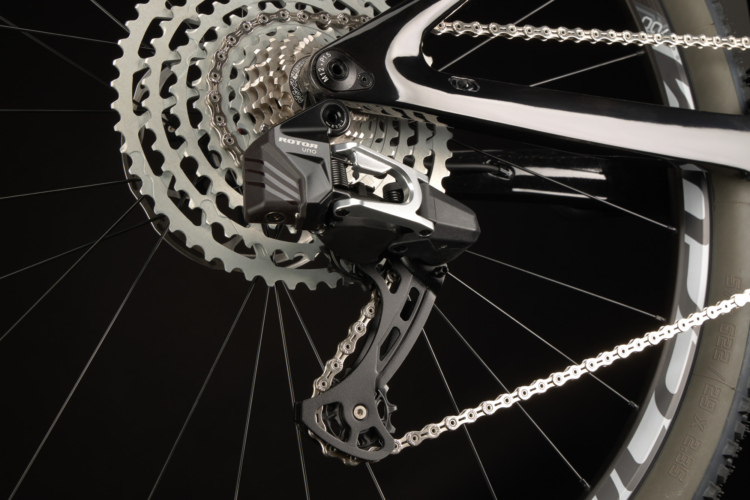
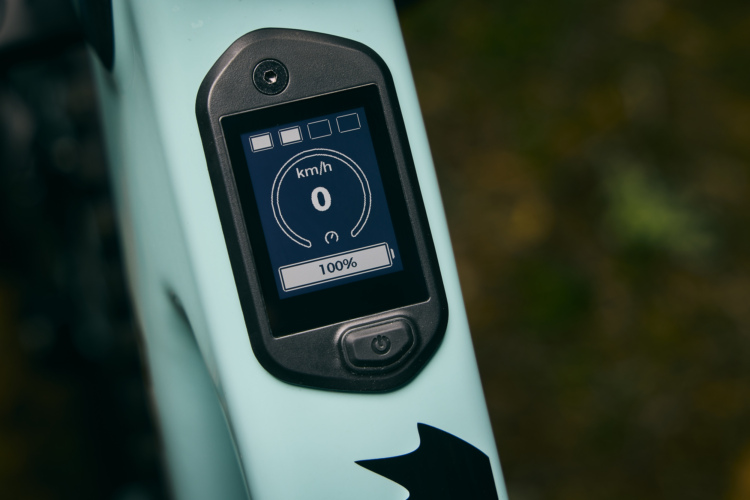

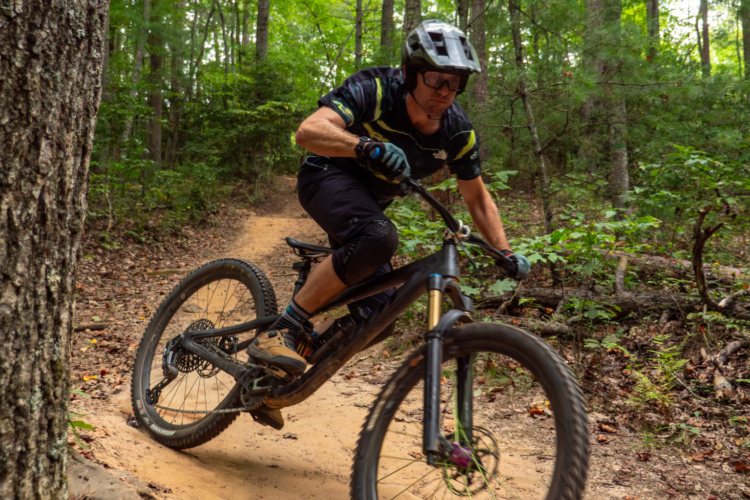
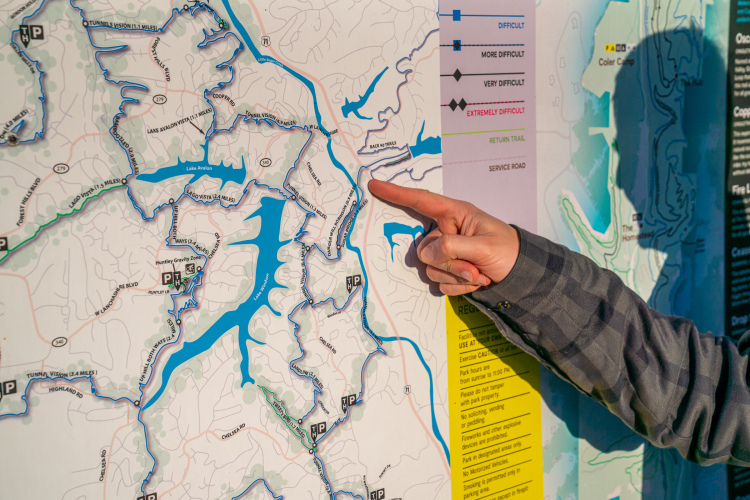
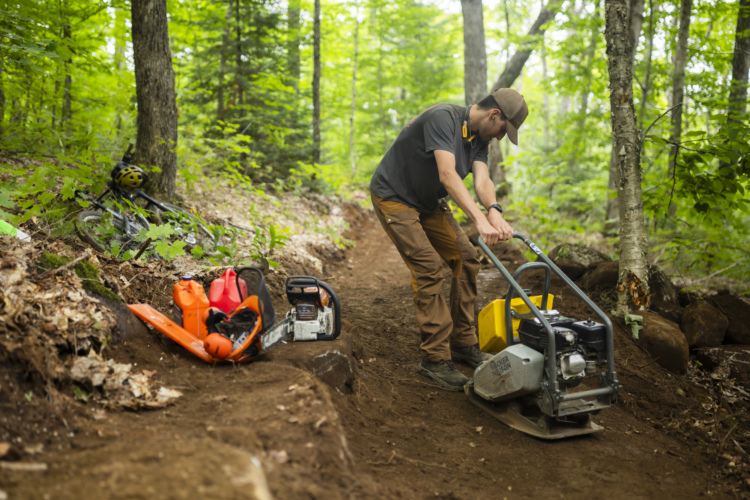



4 Comments
Oct 1, 2025
Oct 1, 2025
Oct 1, 2025
Some cars have a comparable feature for "saving" a couple of different positions for a powered driver's seat. A single driver can adjust to two different preset positions during a long trip. Or two drivers of different heights can swap the seat position easily. If a dropper post had similar capability, riders would show us whether that would be useful, and what for. (Or perhaps there are dropper posts that already have this feature, and I'm the last one to find out.)
Oct 1, 2025